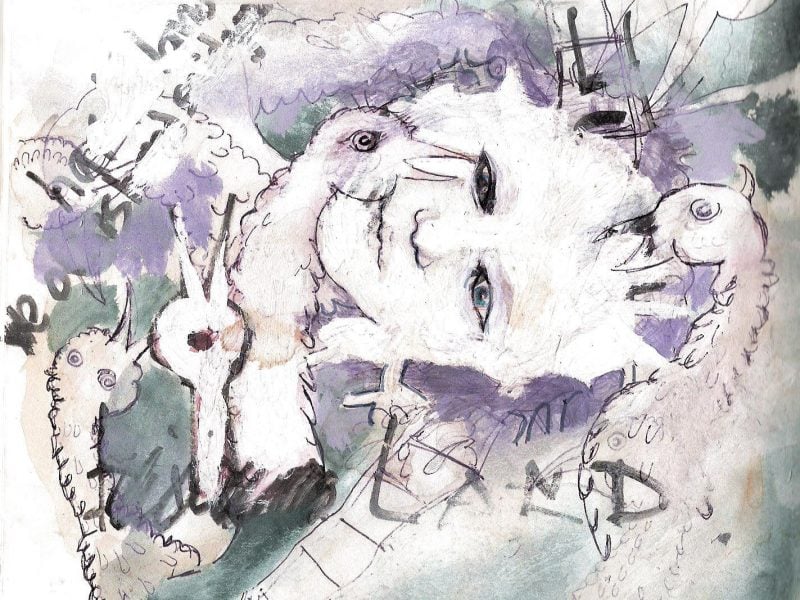This is the text an illustrated talk that LUX artist Michael Curran presented at the National Film Theatre in 2003 to mark the premiere of his film Love in a Cold Climate (2002). We are publishing it on the occasion of an online exhibition of the film.
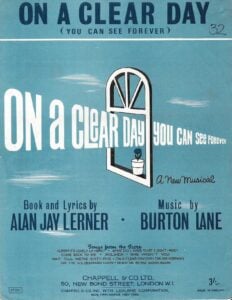
After a chilly start tomorrow will be mainly dry and bright in Eastern areas. However in the West, cloud will steadily increase and rain will arrive in the afternoon. Thursday will be rather windy with a band of cloud and heavy rain moving in from the West. Friday will be cloudy with showers or longer spells of rain just about everywhere, although a few brighter spells are likely to occur. Saturday will be bright, breezy and cool with sunny intervals and blustery showers in many places. More persistent rain will move in from the West during the late afternoon and evening. The Alps and Northern Italy will have thunderstorms. Central and Southern Italy will be mainly dry with sunny spells. France will be windy in the West, with rain clearing to showers. Spain and Portugal will be mainly dry with sunny spells, although the North will have some showers. Greece will be dry, sunny and warm. Eastern Europe will be mainly dry with sunny spells. The Low Countries, Germany, Denmark and Southern Sweden will be cloudy with some heavy rain. Southern Norway will be mainly fine. Further North there will be snow and ice.

What better way to kill it than talking about weather? To predict the weather is to tell the future. In the words of Simon & Garfunkel; “I get all the news I need from the weather report.” There’s another kind of forecasting, a technique called the Oracle, whereby one flicks through a book or a dictionary, a finger pointing at random on the page, a chance game or a form of prophecy.
Hannah Arendt once wrote; ‘Storytelling reveals meaning without the error of defining it.” I won’t be telling any stories this evening but offering a cut-up, details and asides on some reference points to my most recent work – “Love In A Cold Climate.”
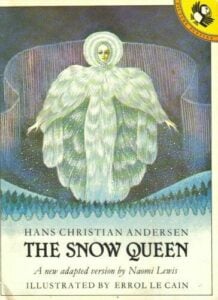
Writing on fairytales, A.S. Byatt notes that one of the surprising things about glass to northerners, must have been its resemblance to ice. One made from sand, heated and melted – the other formed from solid to liquid with the seasons. She also remarks upon the prevalence of ice, snow, glass and mirrors in northern folktales and how frequently they go together; Snow White – a heroine named for the whiteness of snow, a wicked stepmother entranced by a speaking mirror and a glass coffin; the Grimm’s ash princess, Cinderella, wears a slipper made from glass; a Norwegian story tells of an unattainable princess who sits at the top of a glass mountain ….
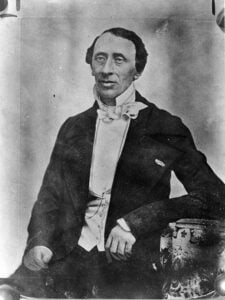
Hans Christian Andersen’s “The Snow Queen” describes the splintering of a monstrous grinning mirror made by the devil. This mirror distorts and disfigures anything reflected in it. As gleeful demons carry the glass heavenwards, to shine in the face of God, it slips from their hands and falls to earth, breaking into millions of shards and fragments.
“Some splinters were as tiny as grains of sand and just as light – so that they were spread by the winds all over the world. When a sliver like that entered someone’s eye, it stayed there; and the person forever after, would see the world distorted, and only be able to see the faults and not the virtues of everything around him, since even the tiniest fragment contained all the evil qualities of the whole mirror. If a splinter should enter someone’s heart – oh that was the most terrible of all – for that heart would turn to ice.’
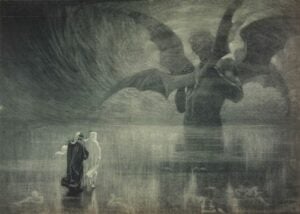
In Canto 34 of the Inferno, Dante sees the Devil in the distance, his great wings beating like a windmill, makes a chill wind. All about him are strewn sinners completely sealed in ice, twisted and distorted into every conceivable posture. Satan is fixed into ice at the centre, to which all the rivers of guilt flow. As he beats his great wings to escape, their wild bitter wind freezes him more into the polluted lake. Rather like Artic explorers, Dante and his guide climb through the matted hair and frozen crusts of Satan’s legs. The proverbial remark about the snowball in Hell is non applicable – the very epicentre of this domain is formed and held by ice.
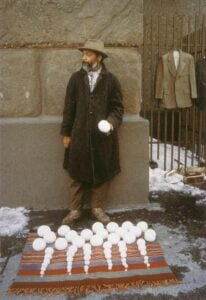
In literature or memoir coldness often begins as pleasure slowly turning into suffering and eventually torture.
A 19th C Drug Addict travelling to the theatre describes his oncoming intoxication: “My fingertips were already slightly cool; soon this turned into a most acute cold, as if I had plunged both hands into a bucket of ice water. But this was not suffering; this needle sharp sensation stabbed me rather like a pleasure. Yet it seemed to me that this cold enveloped me more and more as the interminable journey went on. The cold ever increased and yet I saw people lightly clad, even wiping their foreheads with an air of weariness. The coldness went on increasing until it became alarming ; yet I was dominated by a curiosity to know to what degree it could possibly sink. At last it came to a point, it was so complete – so general, that all my ideas froze. I was a thinking piece of ice!”
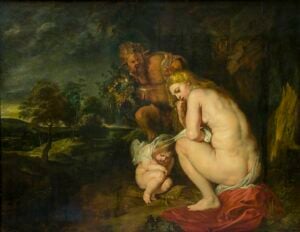
I first saw this painting in the Royal Museum in Antwerp – Venus Frigida by Rubens, painted in 1614. The museum guide offered the epithet; ‘Hunger and thirst diminish Love’s ardour. Later I found a poem inspired by the work.
Let me be warm, let me be fully fed,
Luxurious love by wealth is nourished.
Let me be lean, and cold, and once grown poor,
I shall dislike what I loved before.
The implications of this work appear much harsher to me; the goddess of love huddles in a windswept wilderness like a vagrant, while a lascivious satyr offers her fruit. It’s as if her role is reduced to that of a wandering prostitute. Venus Frigida, her face gazing outward with an expression of utter desolation. Venus is Cold, Venus is Frigid. Is this love in a cold climate?
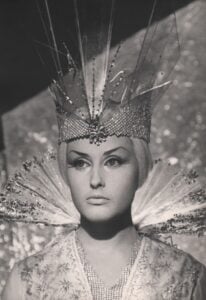
“It’s good when one has no feelings of love or anguish, no feelings at all …but only serenity,”
Andersen’s story offers another kind of goddess, a Queen who can thrive in the cold – who indeed is the very embodiment of coldness and non-feeling. Her palace is near the island of Spitzbergen. She is an enemy of life but she offers immunity by a surrender to a numbed null state which Keats called,’the feel of not to feel it.’ (Repeat)
In Ice & the English Imagination, Francis Spufford writes:
‘Her sterility, her intellect, her icy composure, all take their force from being reversals of conventional female qualities. It is mythically apt that her roles as anti-mother and anti-wife should be vested in the lineaments of beauty, all emptied to white : white fur, white hair, white skin, the whiteness of snow crystals.’
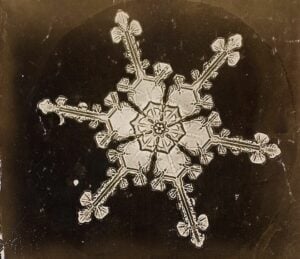
“I can’t remember the time I didn’t love the snow more than anything in the world except my mother.”
wrote Wilson A Bentley, a farmer from Jericho, Vermont, who spent a lifetime studying the beauty and science of snow. While in his teens he taught himself how to photograph the intricate but transient crystals. He also kept a notebook recording the weather every day, using a variety of symbols to represent rain, snow, thunderstorms and clouds. Working long hours in a cold woodshed he took over 5000 snow crystals photographs.
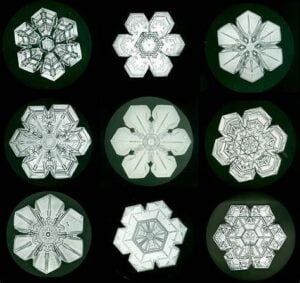
…After the storm is over, with what keen joy of anticipation the dark room is sought, that we may watch the exquisitely beautiful images of these forms emerge in the plate, out of seeming nothingness.’
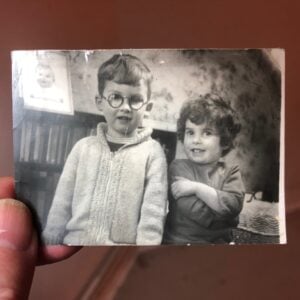
In 1968 as a five year old, I watched an adaptation of ‘The Snow Queen’ on BBC Children’s TV, serialised as part of the TALES FROM EUROPE collection, which also included the Singing Ringing Tree. The production was in Russian overlaid with the voice of an English narrator.
On the Black & White Set, Magical Characters and animals appeared murmuring in a strange language, whilst their sentiments were relayed to me in my mother tongue. The visual image, which shot to the core, was the Snow Queen. Her icy cold yet beautiful face etched itself upon my imagination.

Thirty-one years later I began to think that this memory was a self-invented and in order to find out I began a long, arduous search to verify the existence of the film. I couldn’t find anyone else who recalled seeing it but in continuing to enquire I gradually found others of my generation who dimly recalled selective images – recollections of a crow, a wild gypsy camp, an old reindeer and the terrifying, icy countenance of a beautiful woman.
Finding a copy of the film was difficult. My requests to the BBC were in vain and just as I’d given up all hope of ever finding it, someone sent me a VHS copy of the film. I felt very nervous about seeing it and let the tape lie in its envelope for at least an hour. On viewing it I felt a mixture of exhilaration and disappointment. The animals I remembered as warm, real living creatures were puppets and the portrayal of the characters seemed a little ham-fisted and sentimental, yet the key image of the Snow Queen and of her shimmering palace remained a chilling and alluring enigma. A strange temporal collapse occurred between the recollection of the first viewing and the present one, as if time was being literally concertinaed. A compression occurred – the first viewing and the present one overlapping and sealing themselves together. This buried image, in becoming visible again, confronted me with my early expectations of a story and a journey into life and the journey and life-story I had encountered thus far as an adult, I realised that the figure of someone remote, cold , alien – cut off from life, had been a founding identificatory image for me.
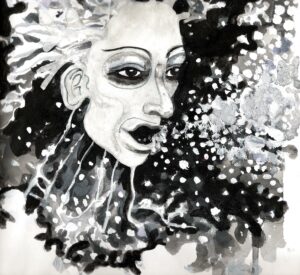
I became curious about the making of the film in 1966 at LENFILM studios and more particularly about the woman who embodied this archetype of frozen feeling – the actress Natalya Klimova. I made enquiries to the LENFILM Archive in Russia and after several months received this reply:
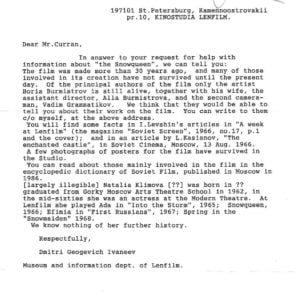
More sustained contact with LENFILM regarding Klimova’s whereabouts never transpired although I did have some contact with Boris Burmistrov, who had been the chief art director and designer on the film. He informed me of the atmosphere and intention whilst shooting and many technical aspects regarding its conception.
He very kindly faxed some of his production drawing sketches. He added – ‘I have no information about Natalya Klimova.’
Feeling certain that I would never find her I began to cast out my net very widely in terms of the subject matter the work might embrace. I wrote to many people asking them for associations based on their ideas of coldness, whiteness and love. I also thought of the filmmaker Robert Bresson’s note to himself :
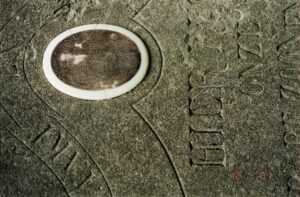
BUILD YOUR FILM ON WHITE, ON SILENCE AND ON STILLNESS
Over some months I received tapes, newspaper clippings texts and photographs. A picture of David Hammons – selling snowballs in New York, the image of a Japanese Love Hotel in flames, photographs of icy forms, excerpts from Melville’s ‘Whiteness of the Whale”, Information about the freezing of horse sperm, Snow Queen deserts and pinball machines. The Snow Queen cocktail from Jay Peak Ski Resort : 20z Ruby Red Grapefruit juice, 4oz 7-Up and half oz grenadine – served over crushed ice.

Thinking of what Klimova’s life-story might have been I began reading newspaper obituaries of female actresses and female entertainers.
Mabel Fairbanks. A talented figure skater who was so fascinated by ice that as a child she bought a pair of skates from a pawnshop and stuffed the toes with cotton so they’d fit. Frustrated by race restrictions at Central park her uncle built her a 6ft by 6ft ice rink in her bedroom. This was made from wood and tin. Using dry ice with added water it became a mini rink.
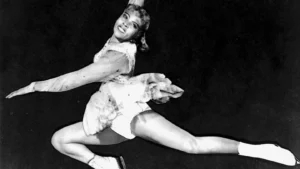 1
1
I began to look at Hans Christian Andersen again, not only as a writer but also as a man. Deeply troubled, of ambiguous sexuality, unhappy in love. He travelled extensively throughout his life, entertaining kings and aristocrats with his tales, in these journeys there was always a sense that he was trying to escape a very troubled part of himself – his own inherent melancholy.
From his journal ; ‘January 16th 1841 ; I understand it well enough. I have nothing to live for. Even art is a bit of a problem for me. My need to be noticed is so great that the idea of a sudden death intrigues me.’
The fluctuations of the weather started to draw my attention and I became aware how much they affected my own mood. I visited the Met Office to look at weather records and climbed onto its rooftops to look at the sky. I also began to notice how much coldness and climate feature in music.
Strangely I discovered that it was not snow I favoured after all but the wind – the breath of the gods, the spirit of life. On many days the wind would threaten to carry me away and reminded me of all those now gone that she carries with her.
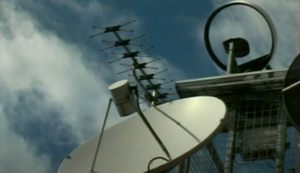
Inevitably I returned to the story of ‘The Snow Queen’ itself and to the Broken Mirror and its fragments. I thought of life – in which one is trying to participate – looking for a point of entry via experience, for moments that might offer confirmation of one’s place in the stream. Of course the possibility of doing so is determined by one’s own ability to interpret events and this work is never done. We remember life in scenes. Life is made of up fragments that can only be given continuity by the stories we tell one another about ourselves.
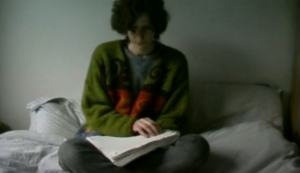
I remembered meeting with a manipulative mind reader who spoke of his gift as a kind of reality collage – cutting into the present to discover the future. The Oracle and the fantasy of prophecy resurfaced. I began to look for clues in every day life, in streaming, in assignations and chance encounters, in listening to what others had to say. The self-contained moment in which understanding is provisional, not yet grasped, the possibility of a moments connection to another moment making a tenuous thread of a story or an intersection of possible stories.
I considered endings, beginnings, being stuck in the middle and considered the spoken, the read and the written word.
Slowly I allowed the work to push me beyond my intentions.
I thought of isolated statements and of paragraphs separated by white spaces – the whiteness of the much greater space in which the word evolves.
I thought of Edmond Jabes saying :
‘To tell a story, in my opinion is to lose it. If I tell you about my life in detail, it escapes in details ….’
I then allowed myself to become lost.

















 1
1

